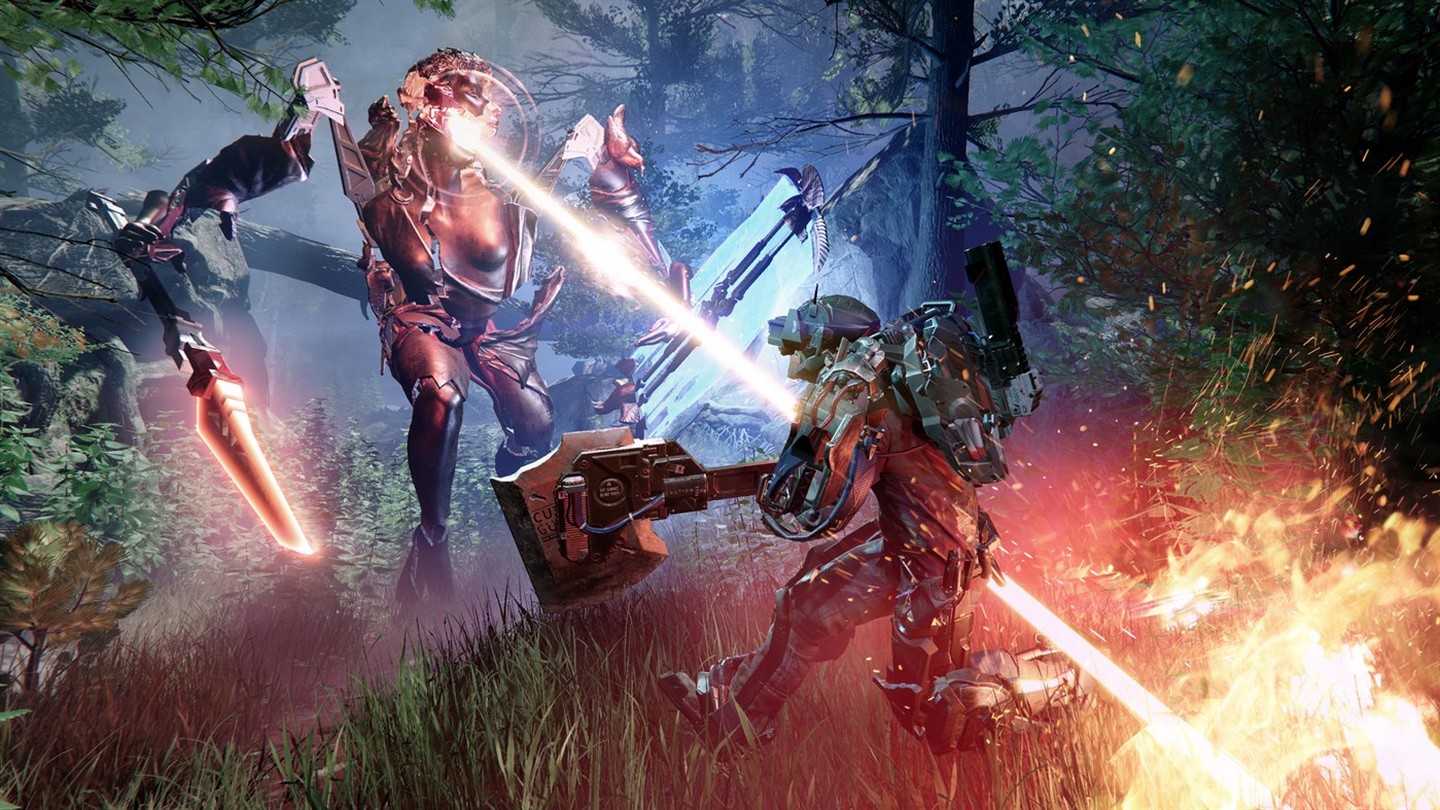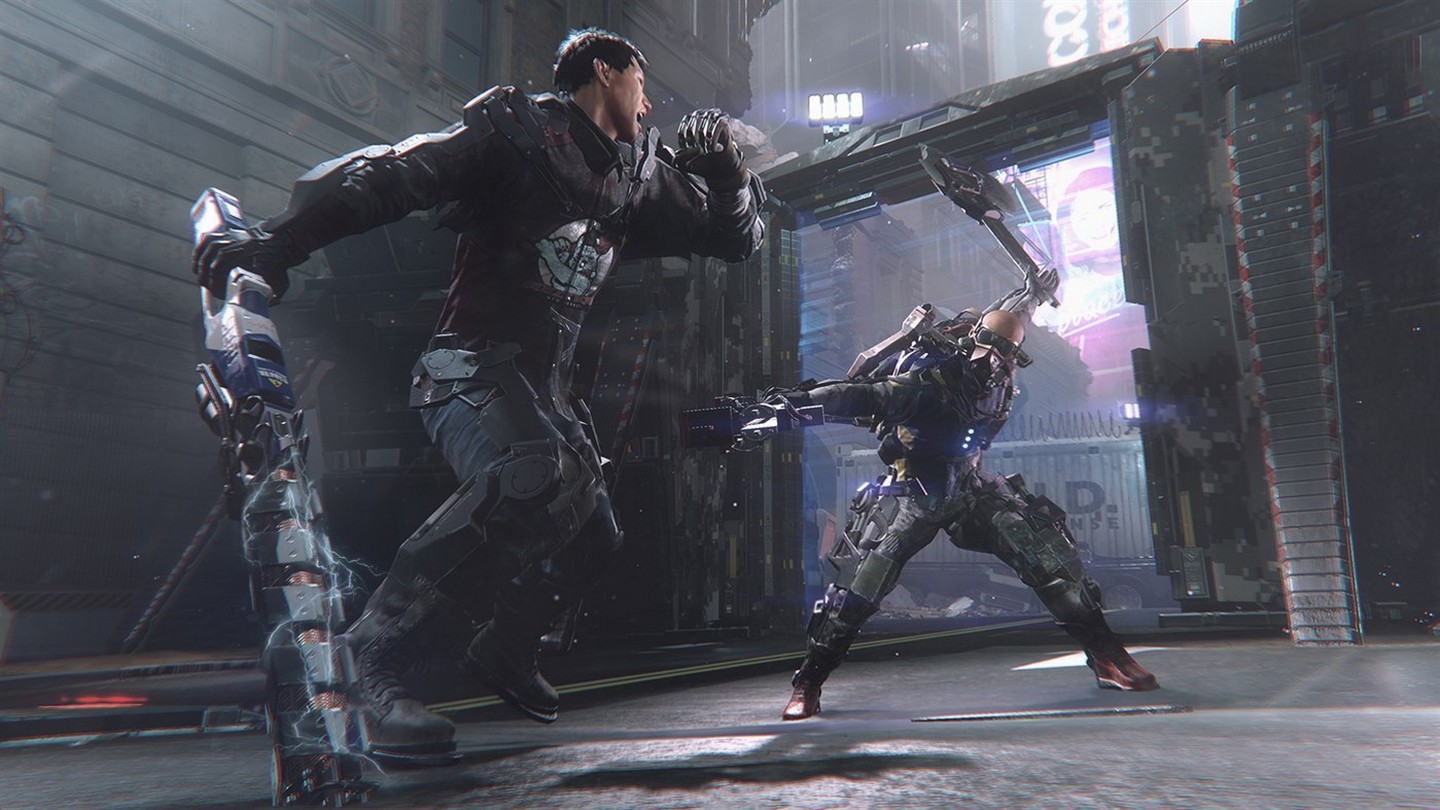Recharged.
The Surge 2 is a direct sequel Deck 13’s dark, sci-fi Soulslike game of the same name. Following a brief opening cinematic which details a plane being shot down and crash-landing on the outskirts of a place named Jericho City, it picks up right where the first game left off. The player’s character wakes up a few weeks later in a police detention centre, where things appear to have descended into chaos – prisoners are running rampant, there’s a strange beast charging around the facility and the guards are in no mood for small talk.
After applying the requisite cosmetic changes to their character, the player’s first objective is to escape the JCPD detention facility.

MSRP: $59.99
Platforms: PC, PS4, Xbox
Gear up.
During their escape from the JCPD facility and into Jericho City itself, players will become acquainted with the core formula of the game: medbays (bonfires) are a point of respite and tech scrap (souls) acquired from fallen enemies can be used to level up. There’s also an early boss fight for players to test out the combat mechanics. After that it’s the standard Souls-esque method: navigate sections of the map to unlock short cuts and slowly but surely progress through the game.
Naturally, getting to grips with the combat is required right from the outset. In Surge 2, encounters are much more akin to those in Dark Souls – weapons, movement and impact have a weighty feel and often require a methodical approach; compared to the more fluid, dynamic, parry-based fights of a game like Sekiro.
The key difference is that Surge 2 encourages the player to target specific body parts of enemies in an effort to sever limbs and obtain their weapon, or schematics for new gear. Implants add an interesting wrinkle to the combat mechanics as well – for example, right at the start of the game players will acquire an implant that will signal the angle of an enemy attack, allowing for directional blocking. This is quite a challenging technique to master, and sometimes causes more frustration than it’s worth, but nevertheless it’s a nice addition.
The Surge 2 promises an expanded arsenal of armour, weaponry and implants for players to get to grips with. It’s clear the team at Deck 13 have placed a strong emphasis on encouraging players to focus on modifying and fine-tuning the right build for them. Gear drops and customisation options are generous and diverse, so there’s plenty of opportunity for experimentation.
Low voltage.
Whilst the combat offers a satisfying learning curve and remains fun throughout, the same cannot be said for the level design. Locales are unfortunately quite bland, which is disappointing. The bleak sci-fi setting of a city collapsing into anarchy is one which should encourage curiosity, but there is really nothing to compel the player to take in the sights when it comes to exploration. Progression becomes a means to an end rather than a journey. The environments are also let down by some rather subpar graphics. The overall aesthetic – futuristic city in tatters, with some cyberpunk vibes – is stifled by the mediocre visuals.

It’s also worth revisiting the fact that Surge 2 picks up directly where its predecessor left off. Players who did not play the original – and this reviewer is one – needn’t worry about being completely lost; and that’s not necessarily a good thing. I struggled to really invest in the narrative of this game, especially as there was no real explanatory introduction to the game’s world or the events of the first Surge. In effect, I felt entirely disconnected from wider narrative events and dismissive of the visions my character gets of a young girl at the start of the game. These appear to be a driving impetus behind subsequent quests – who is she and how does she fit into this world? What gave rise to the nanotechnology that’s now wreaking havoc? I honestly wasn’t particularly interested in seeking answers – which is a shame, because these thematic concepts should pull the player into the world.
I will say that these wider issues around world-building did not stop me from enjoying the process of progression, combat and boss fights in their own right. It’s just unfortunate that really, the game didn’t feel like much more than a sequence of one-off battles interspersed with figuring out the next route short cut. The Surge 2 does a lot of the Souls formula well, but the landscape of Jericho feels conceptually empty compared to the likes of Lordran or Yharnam; which feel so effortlessly steeped in character and lore.
Short circuit.
The Surge 2 has some really satisfying moments. It’s worth an investment based on the wealth of customisation options available, solid progression and genuinely fun combat. These innovations go some way to making up for the lack engrossing story or meaningful characters. However, the overriding sense is that the positive traits of Surge 2 often feel suffocated, mainly by a lack of visual and narrative investment in the world that surrounds its core mechanics.
Review copy of game provided by publisher.
